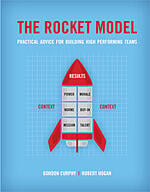 Most organizations have something called an executive or senior leadership team that typically ranges in size from 6-15 people. It consists of the CEO, COO, and functional and business unit heads. General responsibilities for top teams include setting strategy, defining organizational structure, determining key roles staffing , setting performance targets, making policy, and managing the business. Because of their unique membership and responsibilities there are some interesting observations about teams at the top that are worthy of additional discussion.
Most organizations have something called an executive or senior leadership team that typically ranges in size from 6-15 people. It consists of the CEO, COO, and functional and business unit heads. General responsibilities for top teams include setting strategy, defining organizational structure, determining key roles staffing , setting performance targets, making policy, and managing the business. Because of their unique membership and responsibilities there are some interesting observations about teams at the top that are worthy of additional discussion.
1. Who is on the Team? Richard Hackman reported that only ten percent of the 120 top teams he researched had agreement on team membership. This finding fits in with our observations on senior leadership teams -- inclusivity often trumps efficiency and effectiveness. These findings suggest that many top teams have “loose” boundaries and may not be as tightly aligned as one might think.
2. Top Teams are often too big to be Effective. Because top teams tend to be more inclusive than exclusive, most are too big to be effective. Since the number of relationships to manage increases exponentially with each member, top teams bigger than ten members typically suffer from efficiency, effectiveness, speed, alignment, and communication problems. Organizations tend to be more successful when CEOs use a top team of 5-7 key leaders to deal with key challenges, make decisions, and manage day-to-day affairs and a more extended team to help set strategy, review quarterly business results, etc.
3. Should Teams at the Top Operate as a Group or a Team? As described in The Rocket Model: A Practical Guide for Building High Performing Teams, the tasks should dictate if an individual, group, or team is the most effective way to operate. Yet top teams rarely if ever have this discussionsince the CEO usually dictates what he or she is comfortable with and leads accordingly). Although it is well within the prerogative of CEOs to determine how they want to manage their top teams, team efficiency, effectiveness, and, ultimately, organizational performance suffers whenever there is a mismatch between the CEOs’ leadership approach and the tasks to be performed by their top teams.
4. How do Top Team Members Define Their “First Team”? Because top team members have their own organizations to manage, oftentimes C-Suite executives define their “first team” and the function or business unit they manage. In other words, their primary loyalties lie with the HR function or EMEA business unit rather than with the top team. If the CEO is managing direct reports as a group then this is not a big deal, but these divided loyalties will cause major problems if the CEO wants to build a high performing top team. CEOs can minimize this problem by having an explicit discussion about whether direct reports should operate as a group or a team (or when it is appropriate to do so).
5. Artificial Harmony. Top team members rarely complain in team meetings, even thoughthey may suffer from divided loyalties, be unsure of who is or is not on the team, have a team too big to be effective, and/or be under a CEO using the wrong managing approach. Many members come to meetings with “their lips sealed” and refuse to bring up controversial issues. As a result, top teams suffer from artificial harmony and talk about how wonderful everything is in meetings only to complain to their staffs. Rather than hashing out disagreements in team meetings, top team members often use proxies to fight their battles. Organizations whose top team members heap praise on their peers, yet suffer from a “silo mentality,” are often victims of artificial harmony.
6. The Cascade Effect. It is important to remember that top team dysfunction has a ripple effect across the rest of the organization. Open warfare between the heads of R&D and Marketing, Marketing and Sales, Sales and Operations, or Finance and IT will play out in major battles between the departments. CEOs need to explicitly manage artificial harmony and open warfare if they want to create a fully engaged workforce and a high performing organizational culture.
By Gordon Curphy
Curphy Consulting Corporation
Guest blogger and co-author of
The Rocket Model Perhaps one of the most overlooked yet most important actions of team functioning is setting team goals. Far too many teams have poorly defined goals or none at all. The goals of a group or team should determine:
Perhaps one of the most overlooked yet most important actions of team functioning is setting team goals. Far too many teams have poorly defined goals or none at all. The goals of a group or team should determine:

